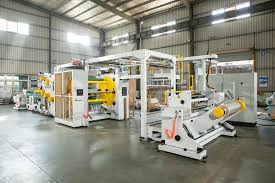The global adhesive equipment market, essential for precise bonding across industries—packaging, automotive, construction, and electronics—is poised for strong growth. Valued at approximately USD 37.1 billion in 2024, it is projected to reach around USD 54.5 billion by 2033, at a 4–5% CAGR.
Adhesive-equipment-market
Request a sample copy of research report:https://www.datamintelligence.com/download-sample/adhesive-equipment-market
Market Overview & Drivers
Steady Global Expansion
Market estimates vary slightly: IMARC places it at USD 37.1 b (2024) → USD 54.5 b by 2033 (CAGR 4.4%), while Acumen sees USD 32.3 b (2022) → USD 54.2 b by 2032 (5.4% CAGR). BCC Research adds adhesives + equipment together at USD 72.1 b → USD 89.9 b by 2029 (4.5% CAGR).
Key Growth Drivers
- Automation & Industry 4.0: Smart, automated dispensing systems reduce waste and boost efficiency.
- Packaging & E‑commerce Boom: Surge in online shopping requires rapid, secure adhesive applications.
- Lightweight Automotive Trends: Adhesive bonding enables lighter vehicles and structural joints.
- Sustainability Push: Eco-friendly, VOC-free and bio-based adhesive systems gain prevalence.
- Multi‑Industry Adoption: From electronics to construction, demand spans diverse sectors.
Product & Application Highlights
- Top Product Segment
Industrial hot‑melt systems dominate (~35–45% share), prized for their speed and versatility. - Rising Segment – Controllers
Precision adhesive controllers (pattern/flow control) are the fastest-growing, supporting waste reduction and repeatability. - Leading Applications
Packaging (≈40%), followed by construction (~25%) and lamination (~20%)—driven by infrastructure and consumer goods needs.
Regional Perspectives: US & Japan
United States / North America
- North America leads (~35% revenue share) and exhibits strong growth, with a projected ~5.9% CAGR.
- U.S. construction activity uptick (e.g., Canada housing completions +11%) strengthens demand for equipment.
- U.S. adoption of eco‑friendly adhesives is rising in response to stricter EPA and environmental benchmarks.
Japan
- Though data is merged within Asia–Pacific, Japan benefits from strong automotive and electronics sectors requiring precise adhesive application.
- Growth in modular, customizable, and digital adhesive systems aligns with Japan’s advanced manufacturing ethos.
Growth Opportunities
- Eco‑equipment: Machines for bio-based or low-VOC adhesives meet sustainability mandates.
- Smart & Modular Tech: Equipment with IoT, AI, and modular designs enables flexible, scalable manufacturing.
- SME Market Access: Compact, affordable controllers and systems can penetrate price-sensitive small businesses.
- Industry Integration: Tailored systems for EV battery assembly, medical devices, and renewable materials yield new applications.
- Aftermarket & Servicing: Growth in maintenance, retrofits, and training enhances long-term value.
Market Constraints
- High CapEx: Up-front costs for automated systems limit adoption among SMEs.
- Raw Material Volatility: Resin price fluctuation impacts equipment ROI.
- Regulatory Pressures: VOC restrictions can render some equipment obsolete or non-compliant.
Expert Insight
“Emission and sustainability concerns are pushing demand for solvent-free, eco-friendly adhesive systems,” notes BCC Research.
“Automation and modularity are reshaping adhesive equipment—especially in packaging, automotive, and electronics,” says Lucintel.
Request a Quotation: https://www.datamintelligence.com/buy-now-page?report=adhesive-equipment-market
Strategic Outlook
To thrive as the adhesive equipment market evolves, stakeholders should:
- Develop affordable, modular systems tailored to SMEs.
- Integrate IoT and AI for real-time monitoring and predictive maintenance.
- Prioritise eco-friendly technology and bio-based adhesive compatibility.
- Expand service offerings and training for aftermarket engagement.
- Focus R&D on emerging sectors: EV batteries, digital printing, and medical devices.










留言 (0)